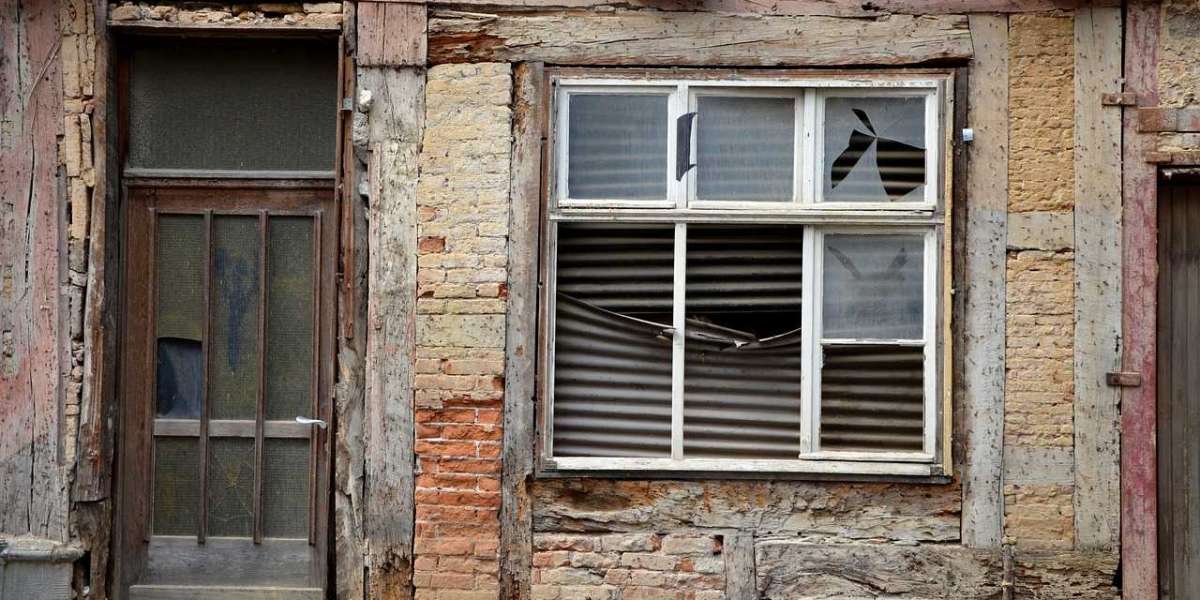House Demolition: A Comprehensive Guide
House demolition is a process that involves the complete removal or destruction of a building or structure. This process is often necessary due to a variety of reasons, including the end of a building's lifecycle, safety hazards, urban redevelopment, or the construction of new properties. The demolition of a house is a significant undertaking that requires careful planning, expertise, and the proper permits to ensure it is completed safely and efficiently.
1. Introduction to House Demolition
Demolition is a crucial phase in the construction industry. It can range from small-scale residential demolitions to large-scale industrial or commercial property demolition. When it comes to houses, demolitions are typically done when a property is too old, unsafe, or simply needs to be replaced with a new structure. It is a complex operation that involves various steps to ensure the property is safely and completely torn down while minimizing environmental impact.
2. Reasons for Demolition
There are several reasons why a house might be demolished:
2.1. Age of the Property
One of the most common reasons for demolition is the age of the structure. Over time, houses can suffer from wear and tear, deteriorating foundations, and structural issues that make them unsafe to inhabit or costly to repair. In some cases, a house might be too old to modernize or renovate, prompting the decision to demolish and rebuild.
2.2. Safety Concerns
Houses that are severely damaged by fire, storms, or other natural disasters may pose a significant safety risk to inhabitants or nearby structures. If repairing the damage is not cost-effective or possible, demolition may be the safest option.
2.3. Urban Redevelopment
In urban areas, house demolitions are often part of redevelopment projects. A developer may choose to tear down old homes to make way for new construction, such as apartment complexes, office buildings, or mixed-use developments.
2.4. Environmental Concerns
In some cases, the demolition is required because the building material contains hazardous substances like asbestos, lead paint, or mold that could be harmful to the environment and people’s health. The safe demolition and disposal of these materials are essential to prevent contamination.
2.5. Expired or Broken Lease Agreements
In areas where commercial properties and houses are part of lease agreements, the expiration of the lease or a broken contract can sometimes lead to the demolition of the property to give way for other uses or developments.
3. Types of Demolition
Demolition can be divided into two primary types: total demolition and selective demolition.
3.1. Total Demolition
Total demolition involves the complete removal of a building, often down to its foundation. This type of demolition is generally used when a structure is beyond repair or when it is being replaced by a new building or development.
3.2. Selective Demolition
Selective demolition, also known as deconstruction, focuses on dismantling specific parts of a building, such as the roof, floors, or walls, while leaving the rest of the structure intact. This method is often used to preserve parts of the building for reuse or recycling. It can also be used for the removal of hazardous materials, like asbestos, before the rest of the demolition proceeds.
4. The House Demolition Process
The demolition of a house is not simply about tearing it down. It requires extensive planning and preparation to ensure it’s done safely and in accordance with local regulations.
4.1. Planning and Permitting
Before beginning any demolition work, obtaining the proper permits is essential. Local governments typically require a demolition permit to ensure that the work meets safety standards, environmental regulations, and zoning laws. This step involves submitting detailed plans for the demolition and ensuring that utility services (like water, gas, and electricity) are safely disconnected.
4.2. Environmental Considerations
Environmental concerns are critical when demolishing a house. Demolition contractors must conduct an environmental assessment to identify hazardous materials that need to be removed before the demolition can proceed. Asbestos, lead paint, and mold are examples of dangerous substances that require special handling and disposal methods.
4.3. Safety Measures
The demolition team must take extensive safety precautions to protect workers, nearby residents, and the surrounding environment. Proper protective gear, safety barriers, and even air monitoring systems may be used to ensure that the demolition process is carried out without accidents or exposure to dangerous materials.
4.4. Demolition Methods
Several methods can be used for house demolition, depending on the structure, its location, and the type of demolition required.
4.4.1. Mechanical Demolition
This is the most common method, where heavy machinery, such as excavators or bulldozers, is used to dismantle the structure. These machines break down the house into manageable pieces, which are then hauled away for disposal or recycling.
4.4.2. Explosive Demolition
In some cases, explosives are used to demolish a building, particularly in urban environments where a quick and controlled demolition is required. This method is often reserved for large structures and is performed by specialized teams trained in the use of explosives.
4.4.3. Manual Demolition
Manual demolition is a labor-intensive method where workers manually tear down parts of the structure. This method is more common in smaller-scale demolitions or when working with historical buildings or delicate structures that require careful handling.
4.5. Disposal and Recycling
After the demolition is complete, the debris must be removed from the site. Many materials can be recycled or repurposed, such as wood, steel, concrete, and bricks. Proper disposal of non-recyclable materials, including hazardous substances, must be done in accordance with environmental regulations.
5. Costs of Demolition
The cost of demolishing a house depends on several factors:
5.1. Size and Complexity of the Structure
Larger homes or buildings with multiple stories will typically cost more to demolish, due to the increased labor and machinery required. Houses that have more complex structures or materials may also increase costs.
5.2. Hazardous Materials
The presence of hazardous materials, such as asbestos, will add to the cost of demolition. Specialized labor and equipment are needed to safely remove these materials before demolition can proceed.
5.3. Location and Access
The location of the property can affect the cost, particularly if it is located in a densely populated area where there is limited access for heavy machinery. Urban demolitions tend to cost more than rural ones due to logistical challenges.
5.4. Permitting Fees
Obtaining the necessary permits and complying with local regulations can add to the overall cost. The permit fees can vary significantly depending on the location and the scope of the project.
6. Legal and Environmental Regulations
Demolition work is subject to a variety of legal and environmental regulations, which can vary by location. These include:
- Building Codes: Demolition contractors must follow local building codes, which dictate safety standards and waste disposal requirements.
- Environmental Regulations: Proper disposal of debris, especially hazardous materials, is required to minimize the environmental impact.
- Waste Management: Some areas have strict rules about the disposal of construction and demolition debris, encouraging recycling and reusing materials where possible.
7. Conclusion
House demolition is a significant process that requires careful planning and execution. Whether it’s for safety reasons, redevelopment, or simply the end of a property’s useful life, demolishing a house involves numerous steps, from obtaining permits to safely disposing of debris.



